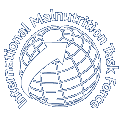Maternal and child undernutrition: effective action at national level
Bryce J, Coitinho D, Darnton-Hill I, Pelletier D, Pinstrup-Andersen P.
This paper reports on an assessment of actions addressing undernutrition in the countries with the highest burden of undernutrition, drawing on systematic reviews and best-practice reports.
Summary of paper taken from LANCET
80% of the world’s undernourished children live in just 20 countries. Intensified nutrition action in these countries can lead to achievement of the first Millennium Development Goal (MDG) and greatly increase the chances of achieving goals for child and maternal mortality (MDGs 4 and 5). Despite isolated successes in specific countries or for interventions—eg, iodised salt and vitamin A supplementation—most countries with high rates of undernutrition are failing to reach undernourished mothers and children with effective interventions supported by appropriate policies.
This paper reports on an assessment of actions addressing undernutrition in the countries with the highest burden of undernutrition, drawing on systematic reviews and best-practice reports. Seven key challenges for addressing undernutrition at national level are defined and reported on: getting nutrition on the list of priorities, and keeping it there; doing the right things; not doing the wrong things; acting at scale; reaching those in need; data-based decisionmaking; and building strategic and operational capacity.
Interventions with proven effectiveness that are selected by countries should be rapidly implemented at scale. The period from pregnancy to 24 months of age is a crucial window of opportunity for reducing undernutrition and its adverse effects. Programme efforts, as well as monitoring and assessment, should focus on this segment of the continuum of care. Nutrition resources should not be used to support actions unlikely to be effective in the context of country or local realities.
Nutrition resources should not be used to support actions that have not been proven to have a direct effect on undernutrition, such as stand-alone growth monitoring or school feeding programmes. In addition to health and nutrition interventions, economic and social policies addressing poverty, trade, and agriculture that have been associated with rapid improvements in nutritional status should be implemented.
There is a reservoir of important experience and expertise in individual countries about how to build commitment, develop and monitor nutrition programmes, move toward acting at scale, reform or phase-out ineffective programmes, and other challenges. This resource needs to be formalised, shared, and used as the basis for setting priorities in problem-solving research for nutrition.
use this link to access full article
